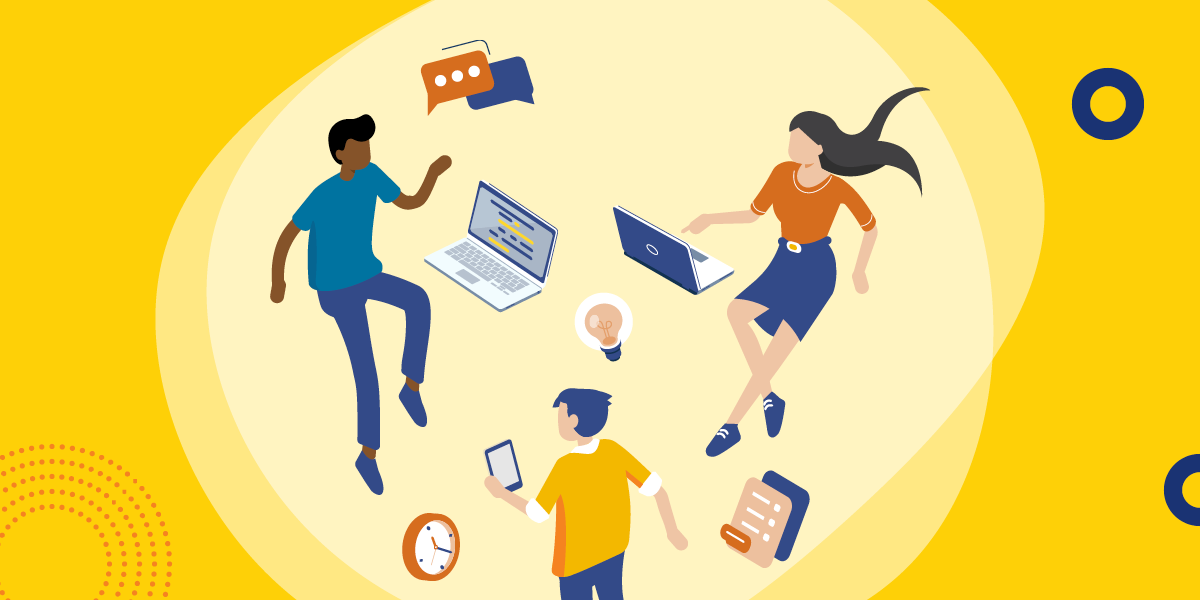In Evanston, Illinois, four new libraries have appeared. Except that they look nothing like libraries and everything like, well, posters with instructions to access a Wi-Fi hotspot. Because that's exactly what they are.
"How can a Wi-Fi hotspot anchor a library?" I hear you ask. My thoughts exactly. So I did a little digging and found … not a lot. It seems that these strange but rather clever libraries are still a relatively unknown phenomenon in both the tech and library worlds.
How a Digital Pop-up Library Works
What I did find out is this: Evanston, Illinois, Public Library is one of a dozen or so libraries across the country to offer the public access to digital pop-up libraries. Baker and Taylor, a Follett company, is making this possible through their early adopter program. The pop-up libraries are mobile hotspots that only allow users to access one website: the associated library's e-book collection. Once users have connected to the hotspot and accessed the website through a URL indicated on a poster, they can download an e-book straight from their browser. While they are reading, users will see a pop-up window where they can enter their contact information if they would like to be contacted about getting a library card. At Evanston Library, digital materials are made available for a week with no fines or fees involved.
Their Purpose
The purpose of a digital pop-up library is to attract new patrons. "We were intrigued to reach people who aren't using the library for whatever reason," says Timothy Longo, access services manager at Evanston Public Library. This is reflected by a promotional video on the Baker and Taylor website, which states the aim of the pop-up libraries is to "extend the presence and brand of your library throughout the community."
Digital pop-up libraries seem to be especially geared to cellphone and tablet users — because like it or not, the world is going mobile. Research shows that 77 percent of Americans now own a smartphone, over double the 35 percent that owned one in 2011. This growth is reflected in almost all age groups and demographics in the U.S. And on top of that, an increasing number of Americans, particularly the younger generation, are getting their news on mobile devices.
Cutting Administrative Burden
It seems that more and more aspects of our lives are being compacted into these increasingly intelligent little devices, and books are not immune from such changes. While phones and tablets still fall short of print books in popularity, there seems to be a place for the convenience of reading on a mobile device. Evanston Public Library's initiative caters to this modern attitude towards reading, while also cutting out the administrative burden of library cards, accounts, and fines. A "low-maintenance, high-impact" approach, according to Baker and Taylor. Sounds like a win-win to me.
Meeting People Where They Are
It is clear that Baker and Taylor is thinking creatively about how to engage the public. At some point, most of us have found ourselves stuck in a waiting room for an unspecified time period with nothing but an outdated tabloid magazine for entertainment. I know I have! These digital pop-up libraries are in high-traffic areas such as hospitals and community centers, where people are often waiting for appointments, or "naturally gather to kill time," according to Timothy. Some partners have located their pop-up libraries on buses and even in correctional facilities. Having something good to read can be a lifesaver in those situations — not to mention this is sure to introduce new people to the library family. Whitney Bretzman, strategic marketing director at Baker and Taylor, says she has been particularly intrigued by the locations partners have chosen. She sees it as an indicator of "how this technology can enable public libraries to reach and serve patrons in challenging, nontraditional environments."
No App Needed
Hotspots expand the reach of the library service and remove the barriers associated with a physical building. Using the Evanston Library model, there is no need for patrons to have a library card, or even an app or any kind of account. The books can be downloaded straight from a web page. If you're anywhere near as impatient as me, navigating a badly designed app can be incredibly frustrating, so the simplicity of this system comes as a relief. On top of that, libraries are underfunded as it is, and the design and upkeep of an app can be eye-wateringly expensive. By using a very simple web page–based model, Evanston Public Library most likely saves itself a world of pain and enables its staff to focus on delivering a great service.
Fitting In with the Shifting Roles of Libraries
We all know that the role of a library building has changed a lot over the years. The addition of computers and Internet access have addressed a different need to those that motivated the first public libraries to open. Plus, many libraries now have social workers on staff to better serve patrons with complex needs, many of whom use the library building as a refuge and a resource. Digital pop-up libraries seem to be an authentic part of the natural changes libraries are going through.
As with any new initiative, there are imperfections with the process and user experience, but I think this will continue to grow in adoption by libraries regardless. It is a great way to promote reading and invite new members into library families.
Evanston's digital pop-up libraries are an intriguing new initiative, and perhaps one with the potential to present a new face of libraries. Keep an eye out, in case one pops up near you soon!
Evanston Library has digital pop-up libraries in the following locations:
- Erie Family Health Center (1285 Hartrey Ave, Evanston, IL 60202)
- Presence St. Francis Hospital (355 Ridge Ave, Evanston, IL 60202)
- Fleetwood-Jourdain Community Center (1655 Foster St, Evanston, IL 60201)
- Robert Crown Center (1701 Main St, Evanston, IL 60202)
Feel inspired? Think your city could benefit from an initiative like Evanston's? Mobile Beacon hotspots can help you lay the foundations to create digital pop-up libraries in your city — and you can get them donated to your library through TechSoup!
Additional Resources
- Mobile Beacon Hotspots
- Evanston Public Library's press release about the digital pop-up libraries
- CBS article about the digital pop-up libraries
- Axis 360, Baker and Taylor's tool to power pop-up libraries
About the Author
Amy Hooper is a summer content and communications intern at TechSoup. She is a philosophy student at the University of Edinburgh in Scotland where she writes for the university newspaper, The Student. She also manages social media for the faith-based organization Burn 24-7 Edinburgh.






